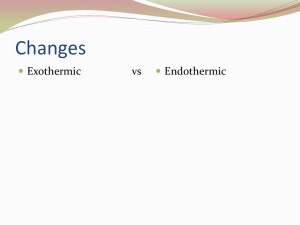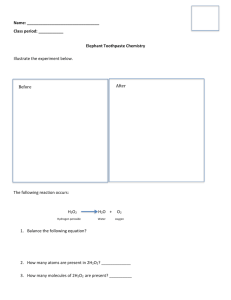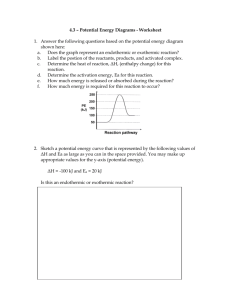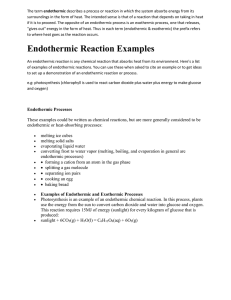File
advertisement
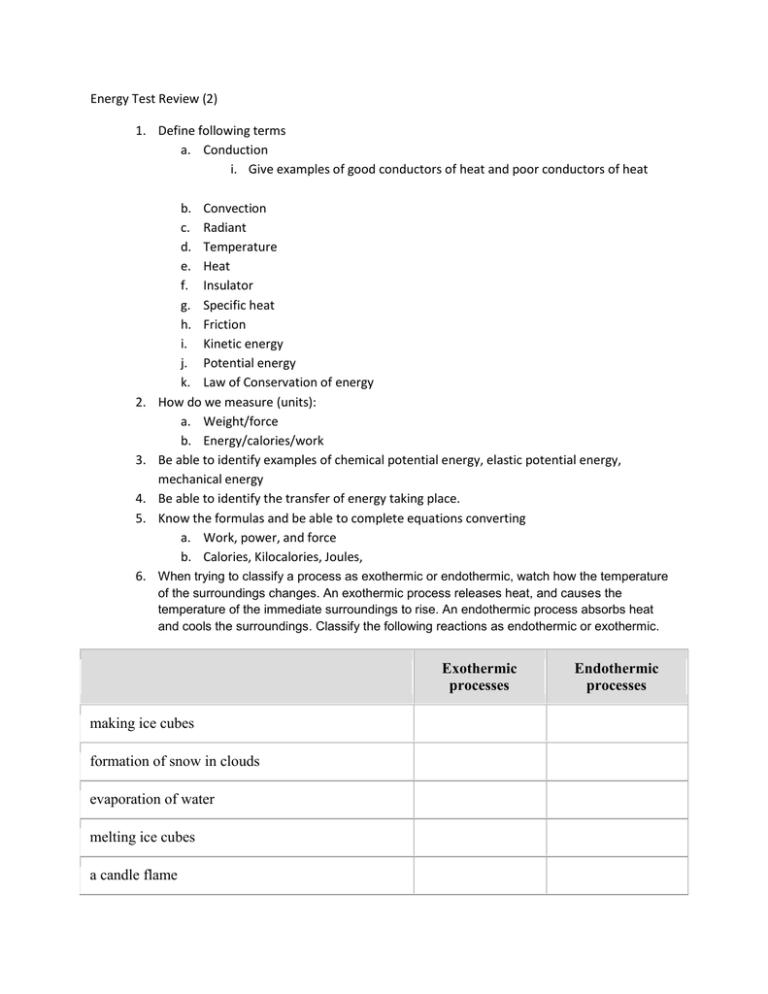
Energy Test Review (2) 1. Define following terms a. Conduction i. Give examples of good conductors of heat and poor conductors of heat 2. 3. 4. 5. b. Convection c. Radiant d. Temperature e. Heat f. Insulator g. Specific heat h. Friction i. Kinetic energy j. Potential energy k. Law of Conservation of energy How do we measure (units): a. Weight/force b. Energy/calories/work Be able to identify examples of chemical potential energy, elastic potential energy, mechanical energy Be able to identify the transfer of energy taking place. Know the formulas and be able to complete equations converting a. Work, power, and force b. Calories, Kilocalories, Joules, 6. When trying to classify a process as exothermic or endothermic, watch how the temperature of the surroundings changes. An exothermic process releases heat, and causes the temperature of the immediate surroundings to rise. An endothermic process absorbs heat and cools the surroundings. Classify the following reactions as endothermic or exothermic. Exothermic processes making ice cubes formation of snow in clouds evaporation of water melting ice cubes a candle flame Endothermic processes Exothermic processes forming a cation from an atom in the gas phase rusting iron cooking an egg separating ion pairs Combining atoms to make a molecule in the gas phase mixing water with an anhydrous salt mixing water and strong acids nuclear fission mixing water with calcium chloride crystallizing liquid salts (as in sodium acetate in chemical handwarmers) reaction of thionyl chloride (SOCl2) with cobalt(II) sulfate heptahydrate reaction of barium hydroxide octahydrate crystals with dry ammonium chloride melting solid salts mixing sodium sulfite and bleach forming ion pairs baking bread mixing water and ammonium nitrate condensation of rain from water vapor Endothermic processes Exothermic processes Endothermic processes conversion of frost to water vapor making an anhydrous salt from a hydrate burning sugar producing sugar by photosynthesis splitting a gas molecule apart 7. What kind of energy is found in our food? a. Chemical energy b. Biodegradable energy c. Thermal energy d. Electrical energy 8. A material that transfers heat well is known as a(n) a. Conductor b. Insulator c. Producer d. Inventor 9. Something that makes an object start moving, stop moving, speed up, or slow down is a(n) a. Load b. Force c. Position d. Effort 10. An object that has energy because of its position is said to have a. Thermal energy b. Kinetic energy c. Potential energy d. Force 11. Calorie Lab Sample Data: Mass of food source = 1.35g Initial temperature of water = 27.0 ®C Final temperature of water = 94.0 ®C Change in temperature = 67.0 ®C a. Sample Calculation i. Find the amount of heat absorbed by the water. ii. Compare the amount of heat absorbed to the amount of food combusted.

